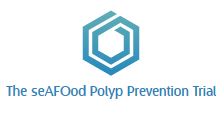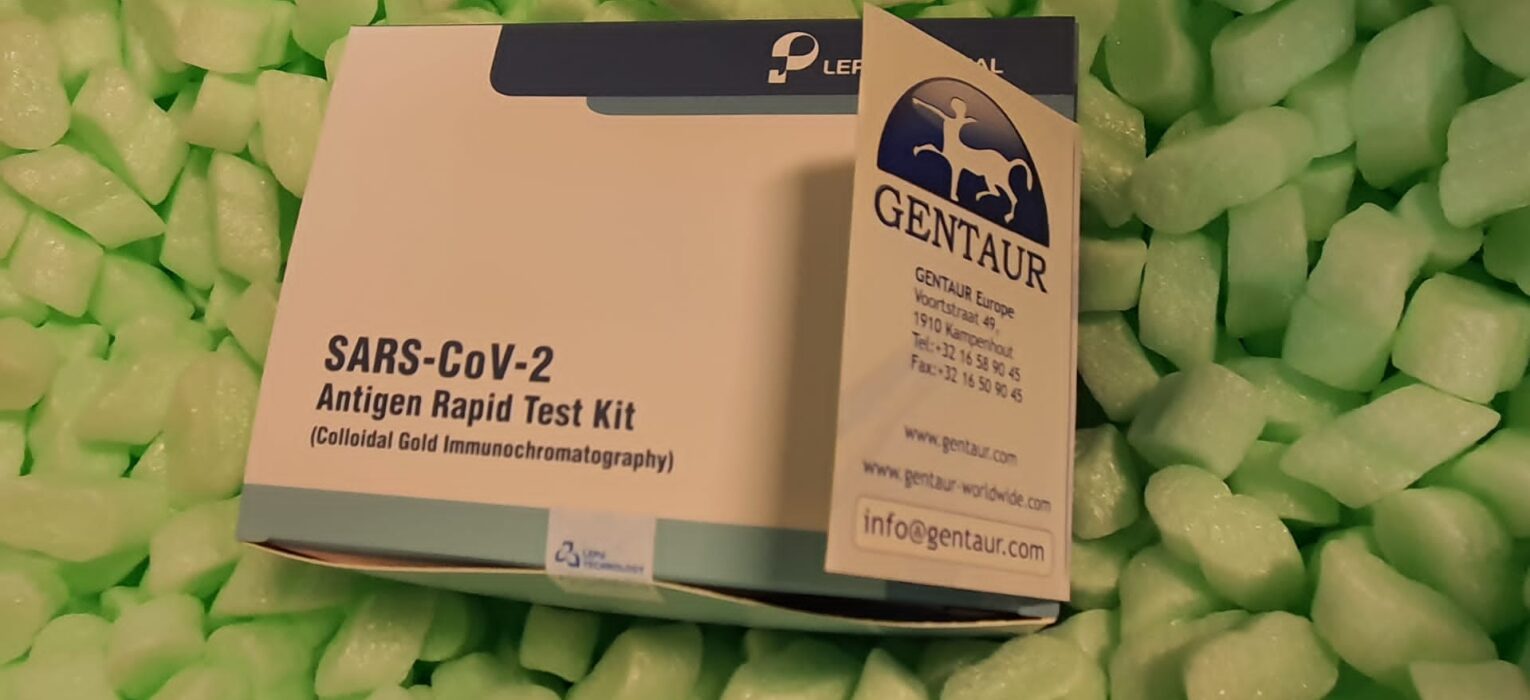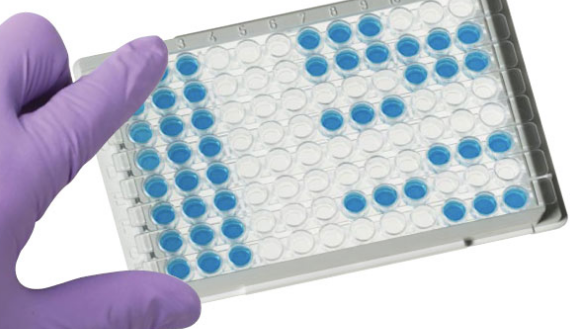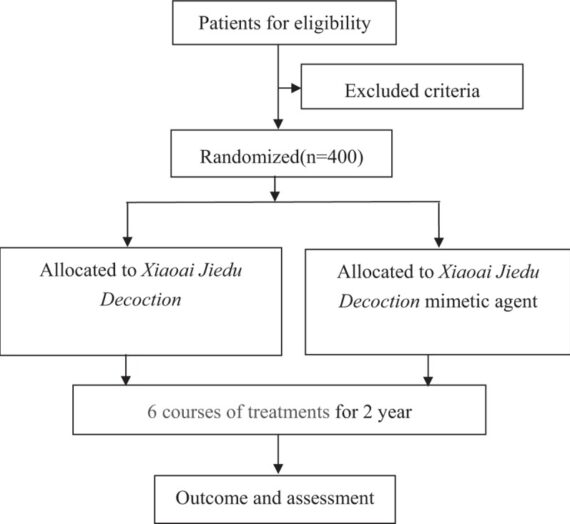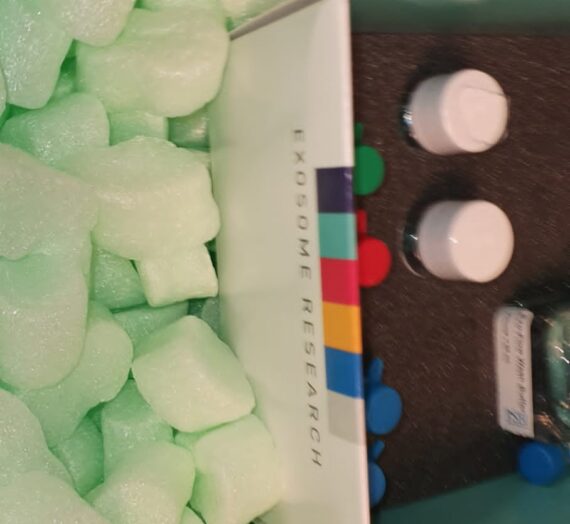The low cost availability of chlorine gasoline, along with the event of commercial chlorinating procedures in the 20th century, led to the manufacturing of a variety of organochlorine compounds many with quite a lot of business functions, together with utilization as pesticides and defoliants and polychlorinated biphenyls (PCBs) used as coolants in electrical energy provide transformers. However, it was quickly discovered that many of those technologically priceless chemicals suffered from a serious drawback in that they resisted biodegradation and that the continued use of those compounds would result in their persistence and accumulation in the setting and thus enter the human meals chain.
Despite regulatory bans or strict limits on utilization being imposed on organochlorine pesticides in most international locations, these compounds proceed to be detected in measurable quantities in the eco-system together with marine life. In common, organochlorine ranges in fish supposed for human consumption are low and most likely under ranges prone to adversely have an effect on human health. Populations at increased danger than most individuals are these subsisting largely on fish and different marine life. Additionally, fish oils obtained from contaminated fish, if consumed in substantial portions by infants and younger youngsters, would possibly current potential health issues if ranges aren’t regularly regulated.
Behavioral and neurological results have been reported in youngsters and ascribed to the consumption of PCB contaminated food plan together with fish. Another present main human health concern, but to be resolved, about organochlorine contaminants in the human food plan pertains to the potential skill of many of those chemicals at low doses to behave as “endocrine disruptors”. This examine highlights the significance of cooking strategies (nonfried vs. fried fish), forms of seafood (fish vs. shellfish), and the general seafood consumption when assessing health results of long-chain (n-3) fatty acids of seafood consumption.
Frequency and kind of seafood consumed affect plasma (n-3) fatty acid concentrations.
Few research have adequately thought of the kind of seafood and background dietary elements when evaluating diet-biomarker and diet-disease associations. The goal of this paper is to guage the connection between totally different seafood meals and long-chain (n-3) fatty acids [eicosapentaenoic acid (EPA) and docosahexaenoic acid (DHA)] biomarkers in the Multi-Ethnic Study of Atherosclerosis (MESA) with white, Chinese-American, black, and Hispanic members. Dietary consumption from a FFQ and plasma phospholipid fatty acids had been assessed in 900 MESA members who weren’t taking fish oil dietary supplements.
When concurrently adjusting for all seafood teams, concentrations of EPA and DHA in plasma phospholipids had been positively correlated with nonfried fish consumption in all four ethnic teams (r = 0.24-0.46; P < 0.01) however not with nonfried shellfish, fried fish, or fish in combined dishes. The magnitude of this correlation was attenuated by as much as 67% when kind of seafood was not taken into consideration. After additional adjusting for demographic traits and different dietary traits in multivariate regression fashions, the affiliation of nonfried fish consumption remained important (P-trend < 0.001). Data had been suggestive of a plateau impact at a nonfried fish consumption of about twice weekly. The affiliation of nonfried fish consumption was not modified by consumption of (n-6) PUFA or alpha-linolenic acid.
A search was carried out of the revealed literature reporting complete mercury (Hg) in hair and blood in girls and infants. These biomarkers are validated proxy measures of MeHg, a neurotoxin discovered primarily in seafood. Average and high-end biomarkers had been extracted, stratified by seafood consumption context, and pooled by class. Medians for common and high-end pooled distributions had been in contrast with the reference degree established by a joint professional committee of the Food and Agriculture Organization (FAO) and the World Health Organization (WHO).
Selection standards had been met by 164 research of girls and infants from 43 international locations. Pooled common biomarkers counsel an consumption of MeHg a number of occasions over the FAO/WHO reference in fish-consuming riparians dwelling close to small-scale gold mining and effectively over the reference in customers of marine mammals in Arctic areas. In coastal areas of south-eastern Asia, the western Pacific and the Mediterranean, common biomarkers strategy the reference. Although the 2 former teams have a better danger of neurotoxicity than the latter, coastal areas are house to the biggest quantity in danger. High-end biomarkers throughout all classes point out MeHg consumption is in extra of the reference worth.
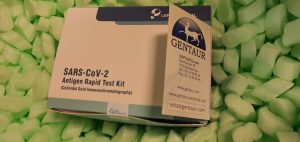
Readily accessible sources of long-chain omega-Three oils: is farmed Australian seafood a greater supply of the great oil than wild-caught seafood?
Seafood consumption enhances consumption of omega-Three long-chain (≥C₂₀) polyunsaturated fatty acids (termed LC omega-Three oils). Humans biosynthesize solely small quantities of LC-omega-3, so they’re thought of semi-essential vitamins in our food plan. Concern has been raised that farmed fish now comprise decrease LC omega-Three content material than wild-harvested seafood as a consequence of using oil mixing in diets fed to farmed fish. However, we noticed that two main Australian farmed finfish species, Atlantic salmon (Salmo salar) and barramundi (Lates calcifer), have increased oil and LC omega-Three content material than the identical or different species from the wild, and stay a wonderful means to attain substantial consumption of LC omega-Three oils.
PGMtide Control Peptide - Rhodamine Labeled |
|||
| FR-040-70 | PHOENIX PEPTIDE | 5 nmol | EUR 604.8 |
Purified Rabbit IgG Isotype Control - Biotin Labeled |
|||
| NRGB-FlowC-01 | PHOENIX PEPTIDE | 200 μl | EUR 330.48 |
Labeled siRNA Set E |
|||
| M1272-1 | Biovision | each | EUR 1182 |
Labeled siRNA Set F |
|||
| M1273-1 | Biovision | each | EUR 1417.2 |
Fluorescent labeled siRNA |
|||
| M1255-10 | Biovision | each | EUR 829.2 |
Fluorescent labeled siRNA |
|||
| M1255-2 | Biovision | each | EUR 529.2 |
Fluorescent labeled siRNA |
|||
| M1255-3 | Biovision | each | EUR 555.6 |
Fluorescent labeled siRNA |
|||
| M1255-4 | Biovision | each | EUR 582 |
Fluorescent labeled siRNA |
|||
| M1255-5 | Biovision | each | EUR 633.6 |
Fluorescent labeled siRNA |
|||
| M1255-6 | Biovision | each | EUR 660 |
Fluorescent labeled siRNA |
|||
| M1255-7 | Biovision | each | EUR 698.4 |
Fluorescent labeled siRNA |
|||
| M1255-8 | Biovision | each | EUR 738 |
Fluorescent labeled siRNA |
|||
| M1255-9 | Biovision | each | EUR 790.8 |
Purified Rabbit IgG Isotype Control - Fluorescent Labeled |
|||
| NRGF-FlowC-01 | PHOENIX PEPTIDE | 100 μl | EUR 461.16 |
XMIR Texas-Red labeled positive control RNA oligo with Xmotif |
|||
| XMIR-POS | SBI | 10 rxn | EUR 379 |
miRNA Inhibitor Neg Control |
|||
| M1266-1 | Biovision | each | EUR 333.6 |
ss miRNA mimics Neg Control |
|||
| M1260-1 | Biovision | each | EUR 333.6 |
ds miRNA mimics Neg Control |
|||
| M1263-1 | Biovision | each | EUR 333.6 |
siRNA Negative Control |
|||
| 20-abx941273 | Abbexa |
|
|
siRNA Negative Control |
|||
| abx941273-150g | Abbexa | 150 µg | EUR 150 |
siRNA Negative Control |
|||
| abx941273-300g | Abbexa | 300 µg | EUR 187.5 |
HGE IgG Pos/Neg Control set |
|||
| EE-GC | Fuller Laboratories | each | EUR 50 |
Babesia microti Pos/Neg Control Sera (human IgG) |
|||
| BM-GC | Fuller Laboratories | each | EUR 60 |
Babesia microti Pos/Neg Control Sera (human IgM) |
|||
| BM-MC | Fuller Laboratories | each | EUR 70 |
Control siRNA Vector (pGB-control) |
|||
| 9500C-20 | Biovision | each | EUR 405.6 |
Custom Pos Control siRNA |
|||
| M1258-1 | Biovision | each | EUR 333.6 |
Human IgG2a Capture Beads for Flow Detection (Neg. Control) |
|||
| IGG2ACB-25 | ImmunoStep | 25 | EUR 198 |
|
Description: Human IgG2a Capture Beads for Flow Detection (Neg. Control) |
|||
PCB72 (Aptamer, FITC labeled 9.3) , DNA Aptamer, FITC labeled |
|||
| AD-134-F | Alpha Diagnostics | Custom | Ask for price |
AF9 - Cy3 Labeled |
|||
| FC3-048-68 | PHOENIX PEPTIDE | 1 nmol | EUR 379.08 |
BCL - Cy3 Labeled |
|||
| FC3-073-38 | PHOENIX PEPTIDE | 1 nmol | EUR 672.84 |
BCL - Cy5 Labeled |
|||
| FC5-073-38 | PHOENIX PEPTIDE | 1 nmol | EUR 756 |
AF9 - FAM Labeled |
|||
| FG-048-68A | PHOENIX PEPTIDE | 1 nmol | EUR 267.84 |
BCL - FAM Labeled |
|||
| FG-073-38A | PHOENIX PEPTIDE | 1 nmol | EUR 405 |
Fas- FITC labeled |
|||
| MC-102 | Kamiya Biomedical Company | 3.22 | Ask for price |
Fas-PE labeled |
|||
| MC-103 | Kamiya Biomedical Company | 3.22 | Ask for price |
p53 (FITC labeled) |
|||
| MM-1015-15 | ImmunoBioscience | 0.5 ml (0.1 mg) | EUR 158.9 |
p53 (FITC labeled) |
|||
| MM-1015-16 | ImmunoBioscience | 1.0 ml (0.2mg) | EUR 238.7 |
BCL - FITC Labeled |
|||
| FG-073-38B | PHOENIX PEPTIDE | 1 nmol | EUR 405 |
CD71 [FITC labeled] |
|||
| MM-1029-15 | ImmunoBioscience | 0.5 ml | EUR 158.9 |
CD71 [FITC labeled] |
|||
| MM-1029-16 | ImmunoBioscience | 1.0 ml | EUR 238.7 |
BCL - Biotin Labeled |
|||
| B-073-38 | PHOENIX PEPTIDE | 20 μg | EUR 405 |
Galnon - Cy3 Labeled |
|||
| FC3-026-20 | PHOENIX PEPTIDE | 1 nmol | EUR 756 |
WKYMVm - Cy3 Labeled |
|||
| FC3-072-12 | PHOENIX PEPTIDE | 1 nmol | EUR 587.52 |
WKYMVm - Cy5 Labeled |
|||
| FC5-072-12 | PHOENIX PEPTIDE | 1 nmol | EUR 587.52 |
Rattin - FAM Labeled |
|||
| FG-018-27A | PHOENIX PEPTIDE | 1 nmol | EUR 376.92 |
Galnon - FAM Labeled |
|||
| FG-026-20A | PHOENIX PEPTIDE | 1 nmol | EUR 405 |
WKYMVm - FAM Labeled |
|||
| FG-072-12A | PHOENIX PEPTIDE | 1 nmol | EUR 267.84 |
CD56-FITC labeled |
|||
| MC-861 | Kamiya Biomedical Company | C5.9 | Ask for price |
Anginex - Cy3 Labeled |
|||
| FC3-028-96 | PHOENIX PEPTIDE | 1 nmol | EUR 497.88 |
Anginex - FAM Labeled |
|||
| FG-028-96A | PHOENIX PEPTIDE | 1 nmol | EUR 267.84 |
Anginex - FITC Labeled |
|||
| FG-028-96B | PHOENIX PEPTIDE | 1 nmol | EUR 267.84 |
Galnon - Biotin Labeled |
|||
| B-026-20 | PHOENIX PEPTIDE | 10 μg | EUR 405 |
WKYMVm - Biotin Labeled |
|||
| B-072-12 | PHOENIX PEPTIDE | 10 μg | EUR 267.84 |
Proctolin - Cy3 Labeled |
|||
| FC3-026-60 | PHOENIX PEPTIDE | 1 nmol | EUR 250.56 |
Proctolin - Cy5 Labeled |
|||
| FC5-026-60 | PHOENIX PEPTIDE | 1 nmol | EUR 250.56 |
Proctolin - FAM Labeled |
|||
| FG-026-60A | PHOENIX PEPTIDE | 1 nmol | EUR 199.8 |
Virokinin - FAM Labeled |
|||
| FG-061-58A | PHOENIX PEPTIDE | 1 nmol | EUR 336.96 |
AF9 - Rhodamine Labeled |
|||
| FR-048-68 | PHOENIX PEPTIDE | 1 nmol | EUR 267.84 |
BCL - Rhodamine Labeled |
|||
| FR-073-38 | PHOENIX PEPTIDE | 1 nmol | EUR 537.84 |
Anginex - Biotin Labeled |
|||
| B-028-96 | PHOENIX PEPTIDE | 10 μg | EUR 267.84 |
RK-10 - Cy5 Labeled |
|||
| FC5-025-89 | PHOENIX PEPTIDE | 1 nmol | EUR 587.52 |
PGN-7 - FAM Labeled |
|||
| FG-046-85A | PHOENIX PEPTIDE | 1 nmol | EUR 267.84 |
PR-39 - FAM Labeled |
|||
| FG-075-09A | PHOENIX PEPTIDE | 1 nmol | EUR 370.44 |
BCL - I-125 Labeled |
|||
| T-073-38 | PHOENIX PEPTIDE | 10 μCi | EUR 1145.88 |
PGN-18 - FAM Labeled |
|||
| FG-046-86A | PHOENIX PEPTIDE | 1 nmol | EUR 267.84 |
Proctolin - Biotin Labeled |
|||
| B-026-60 | PHOENIX PEPTIDE | 20 μg | EUR 102.6 |
Virokinin - Biotin Labeled |
|||
| B-061-58 | PHOENIX PEPTIDE | 10 μg | EUR 336.96 |
Receptorphin - FAM Labeled |
|||
| FG-022-50A | PHOENIX PEPTIDE | 1 nmol | EUR 336.96 |
Rattin - Rhodamine Labeled |
|||
| FR-018-27 | PHOENIX PEPTIDE | 1 nmol | EUR 376.92 |
Galnon - Rhodamine Labeled |
|||
| FR-026-20 | PHOENIX PEPTIDE | 1 nmol | EUR 469.8 |
WKYMVm - Rhodamine Labeled |
|||
| FR-072-12 | PHOENIX PEPTIDE | 1 nmol | EUR 295.92 |
Anti-CHO HRP Labeled Conjugate |
|||
| F017P | Cygnus Technologies | 22 ml | EUR 909.6 |
|
Description: Anti-CHO HRP Labeled Conjugate by Cygnus Technologies is available in Europe via Gentaur. |
|||
Ret-Fluorescein Labeled |
|||
| FC15016 | Neuromics | 100 Tests | EUR 537.6 |
Hym-355 - FAM Labeled |
|||
| FG-004-38A | PHOENIX PEPTIDE | 1 nmol | EUR 336.96 |
GIP (Human) - FAM Labeled |
|||
| FG-027-02A | PHOENIX PEPTIDE | 1 nmol | EUR 336.96 |
fsANP - I-125 Labeled |
|||
| T-005-15 | PHOENIX PEPTIDE | 10 μCi | EUR 1145.88 |
Thyroglobulin (FITC labeled) |
|||
| MM-1021-15 | ImmunoBioscience | 0.5 ml (0.1 mg) | EUR 158.9 |
Thyroglobulin (FITC labeled) |
|||
| MM-1021-16 | ImmunoBioscience | 1.0 ml (0.2mg) | EUR 238.7 |
RK-10 - Biotin Labeled |
|||
| B-025-89 | PHOENIX PEPTIDE | 20 μg | EUR 336.96 |
PR-39 - Biotin Labeled |
|||
| B-075-09 | PHOENIX PEPTIDE | 20 μg | EUR 336.96 |
LIP1 (Mouse) - Cy3 Labeled |
|||
| FC3-016-11 | PHOENIX PEPTIDE | 1 nmol | EUR 756 |
LIP2 (Mouse) - Cy3 Labeled |
|||
| FC3-016-12 | PHOENIX PEPTIDE | 1 nmol | EUR 756 |
Alarin (Rat) - Cy3 Labeled |
|||
| FC3-026-33 | PHOENIX PEPTIDE | 1 nmol | EUR 587.52 |
WRW4 amide - Cy3 Labeled |
|||
| FC3-072-18 | PHOENIX PEPTIDE | 1 nmol | EUR 587.52 |
ACTH (Human) - FAM Labeled |
|||
| FG-001-01A | PHOENIX PEPTIDE | 1 nmol | EUR 267.84 |
CGRP (Human) - FAM Labeled |
|||
| FG-015-02A | PHOENIX PEPTIDE | 1 nmol | EUR 267.84 |
LIP1 (Mouse) - FAM Labeled |
|||
| FG-016-11A | PHOENIX PEPTIDE | 1 nmol | EUR 469.8 |
LIP2 (Mouse) - FAM Labeled |
|||
| FG-016-12A | PHOENIX PEPTIDE | 1 nmol | EUR 469.8 |
Alarin (Rat) - FAM Labeled |
|||
| FG-026-33A | PHOENIX PEPTIDE | 1 nmol | EUR 336.96 |
WRW4 amide - FAM Labeled |
|||
| FG-072-18A | PHOENIX PEPTIDE | 1 nmol | EUR 267.84 |
LL37 (Human) - FAM Labeled |
|||
| FG-075-06A | PHOENIX PEPTIDE | 1 nmol | EUR 537.84 |
WKYMVm - I-125 Labeled |
|||
| T-072-12 | PHOENIX PEPTIDE | 10 μCi | EUR 1145.88 |
Proctolin - Rhodamine Labeled |
|||
| FR-026-60 | PHOENIX PEPTIDE | 1 nmol | EUR 199.8 |
Virokinin - Rhodamine Labeled |
|||
| FR-061-58 | PHOENIX PEPTIDE | 1 nmol | EUR 405 |
Annexin V, FITC Labeled |
|||
| 20030 | AAT Bioquest | 100 tests | EUR 227 |
|
Description: Annexins are a family of proteins that bind to phospholipid membranes in the presence of calcium. |
|||
Annexin V, FITC Labeled |
|||
| 20030-100tests | AAT Bioquest | 100 tests | EUR 222 |
|
Description: Annexins are a family of proteins that bind to phospholipid membranes in the presence of calcium. |
|||
PGN-18 - Biotin Labeled |
|||
| B-046-86 | PHOENIX PEPTIDE | 20 μg | EUR 267.84 |
Compound 7 - Cy3 Labeled |
|||
| FC3-043-33 | PHOENIX PEPTIDE | 1 nmol | EUR 672.84 |
FGL Peptide - Cy3 Labeled |
|||
| FC3-073-36 | PHOENIX PEPTIDE | 1 nmol | EUR 672.84 |
INSL5 (Mouse) - Cy5 Labeled |
|||
| FC5-035-40 | PHOENIX PEPTIDE | 1 nmol | EUR 925.56 |
Compound 7 - Cy5 Labeled |
|||
| FC5-043-33 | PHOENIX PEPTIDE | 1 nmol | EUR 672.84 |
FGL Peptide - Cy5 Labeled |
|||
| FC5-073-36 | PHOENIX PEPTIDE | 1 nmol | EUR 756 |
LIP1 (Mouse) - FITC Labeled |
|||
| FG-016-11B | PHOENIX PEPTIDE | 1 nmol | EUR 469.8 |
LIP2 (Mouse) - FITC Labeled |
|||
| FG-016-12B | PHOENIX PEPTIDE | 1 nmol | EUR 469.8 |
Alarin (Rat) - FITC Labeled |
|||
| FG-026-33B | PHOENIX PEPTIDE | 1 nmol | EUR 336.96 |
Compound 7 - FAM Labeled |
|||
| FG-043-33A | PHOENIX PEPTIDE | 1 nmol | EUR 336.96 |
FGL Peptide - FAM Labeled |
|||
| FG-073-36A | PHOENIX PEPTIDE | 1 nmol | EUR 405 |
Anginex - I-125 Labeled |
|||
| T-028-96 | PHOENIX PEPTIDE | 10 μCi | EUR 1145.88 |
Annexin V, TRITC Labeled |
|||
| 20031-100tests | AAT Bioquest | 100 tests | EUR 222 |
|
Description: Annexins are a family of proteins that bind to phospholipid membranes in the presence of calcium. |
|||
Hym-355 - Biotin Labeled |
|||
| B-004-38 | PHOENIX PEPTIDE | 10 μg | EUR 336.96 |
GIP (Human) - Biotin Labeled |
|||
| B-027-02 | PHOENIX PEPTIDE | 100 μg | EUR 469.8 |
Alarin (Mouse) - Cy3 Labeled |
|||
| FC3-026-32 | PHOENIX PEPTIDE | 1 nmol | EUR 587.52 |
Alarin (Human) - Cy3 Labeled |
|||
| FC3-026-34 | PHOENIX PEPTIDE | 1 nmol | EUR 587.52 |
Tunicate-5 - Cy3 Labeled |
|||
| FC3-040-06 | PHOENIX PEPTIDE | 1 nmol | EUR 672.84 |
Tunicate-6 - Cy3 Labeled |
|||
| FC3-040-07 | PHOENIX PEPTIDE | 1 nmol | EUR 672.84 |
Tunicate-3 - Cy3 Labeled |
|||
| FC3-040-08 | PHOENIX PEPTIDE | 1 nmol | EUR 672.84 |
Metastin (Rat) - Cy3 Labeled |
|||
| FC3-048-87 | PHOENIX PEPTIDE | 1 nmol | EUR 756 |
Copeptin (Rat) - Cy3 Labeled |
|||
| FC3-065-40 | PHOENIX PEPTIDE | 1 nmol | EUR 672.84 |
WKYMVM amide - Cy3 Labeled |
|||
| FC3-072-11 | PHOENIX PEPTIDE | 1 nmol | EUR 587.52 |
Tunicate-5 - Cy5 Labeled |
|||
| FC5-040-06 | PHOENIX PEPTIDE | 1 nmol | EUR 672.84 |
Tunicate-6 - Cy5 Labeled |
|||
| FC5-040-07 | PHOENIX PEPTIDE | 1 nmol | EUR 672.84 |
Tunicate-3 - Cy5 Labeled |
|||
| FC5-040-08 | PHOENIX PEPTIDE | 1 nmol | EUR 672.84 |
Copeptin (Rat) - Cy5 Labeled |
|||
| FC5-065-40 | PHOENIX PEPTIDE | 1 nmol | EUR 756 |
WKYMVM amide - Cy5 Labeled |
|||
| FC5-072-11 | PHOENIX PEPTIDE | 1 nmol | EUR 587.52 |
Alarin (Mouse) - FAM Labeled |
|||
| FG-026-32A | PHOENIX PEPTIDE | 1 nmol | EUR 336.96 |
Alarin (Human) - FAM Labeled |
|||
| FG-026-34A | PHOENIX PEPTIDE | 1 nmol | EUR 336.96 |
Brevinin-1 - FAM Labeled |
|||
| FG-035-75A | PHOENIX PEPTIDE | 1 nmol | EUR 405 |
Tunicate-5 - FAM Labeled |
|||
| FG-040-06A | PHOENIX PEPTIDE | 1 nmol | EUR 336.96 |
Tunicate-6 - FAM Labeled |
|||
| FG-040-07A | PHOENIX PEPTIDE | 1 nmol | EUR 336.96 |
Tunicate-3 - FAM Labeled |
|||
| FG-040-08A | PHOENIX PEPTIDE | 1 nmol | EUR 336.96 |
Metastin (Rat) - FAM Labeled |
|||
| FG-048-87A | PHOENIX PEPTIDE | 1 nmol | EUR 469.8 |
Copeptin (Rat) - FAM Labeled |
|||
| FG-065-40A | PHOENIX PEPTIDE | 1 nmol | EUR 361.8 |
Notwithstanding, LC omega-Three oil content material has decreased in these two farmed species, due largely to changing dietary fish oil with poultry oil. For Atlantic salmon, LC omega-Three content material decreased ~30%-50% between 2002 and 2013, and the omega-3/omega-6 ratio additionally decreased (>5:1 to <1:1). Australian customers more and more search their LC omega-Three from dietary supplements, due to this fact a variety of complement merchandise had been in contrast. The growth and future software of oilseeds containing LC omega-Three oils and their incorporation in aquafeeds would enable these health-benefitting oils to be maximized in farmed Australian seafood. Such advances can help with preventative health care, fisheries administration, aquaculture vitamin, an revolutionary feed/meals business and finally in the direction of improved client health.
